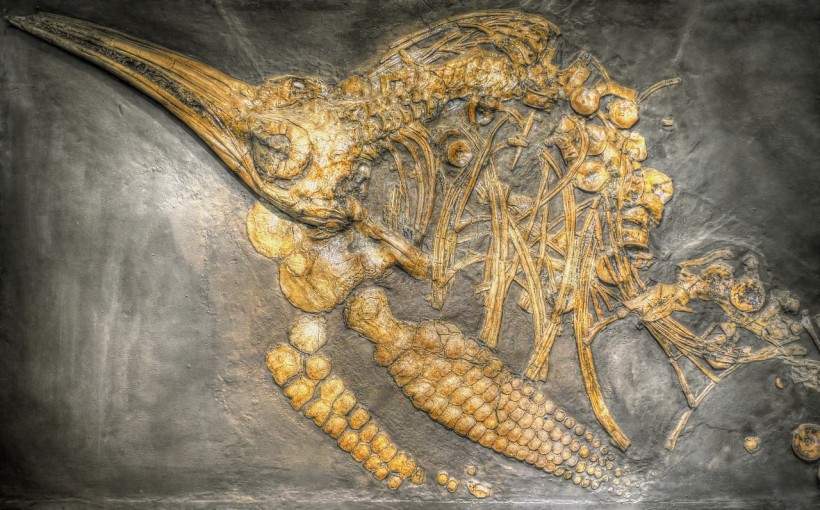
Featured Image Credit: University Of Manchester
Archeologists in Chile have unearthed the fossilised remains of a 13ft-long pregnant ichthyosaur from a melting glacier.
The 139-million year-old fossil, which has been named ‘Fiona’ by scientists at the University of Manchester, was carefully collected by helicopter following an expedition in March and April this year by the University of Magallanes (UMAG) in the Tyndall Glacier area of Chilean Patagonia.

Ichthyosaurs were marine reptiles that lived in the age of dinosaurs, and Fiona is the only pregnant female of Valanginian-Hauterivian age – between 129 and 139 million years old from the Early Cretaceous period – to be excavated on the entire planet.

Now, researchers are keen to find out what information they can gather from the incredibly rare find.
Dr Judith Pardo-Pérez, magellanic palaeontologist and researcher at the GAIA Antarctic Research Centre, UMAG, said: “At four metres long, complete, and with embryos in gestation, the excavation will help to provide information on its species, on the palaeobiology of embryonic development, and on a disease that affected it during its lifetime.”

Dr Dean Lomax, a palaeontologist and visiting scientist at The University of Manchester, said: “The fact that these incredible ichthyosaurs are so well preserved in an extreme environment, revealed by a retreating glacier, is unlike anywhere else in the world.

“The considerable number of ichthyosaurs found in the area, including complete skeletons of adults, juveniles, and newborns provides a unique window into the past.
“The international collaboration helps to share this exceptional ichthyosaur graveyard with the world and, to a large extent, to promote science.”
The expedition to collect Fiona was no mean feat, with experts having to sleep outside in tents. A hangar also had to be set up over the remains to offer some protection from 90kph winds, snow and heavy rain.

Héctor Ortiz, biologist and palaeontological excavator from the Chilean Antarctic Institute and the University of Chile, who worked on the site, said it was ‘the hardest excavation’ he had been on in his entire career.

Dr Lomax added: “The weather was so extreme that we could not get to the ichthyosaur site every day and had to remain in camp. On those days when the team could reach the site, they documented the ichthyosaurs and other fossils and discovered new specimens.
“Amazingly, on average, two ichthyosaurs were found every day.”
If you have a story you want to tell, send it to UNILAD via [email protected]